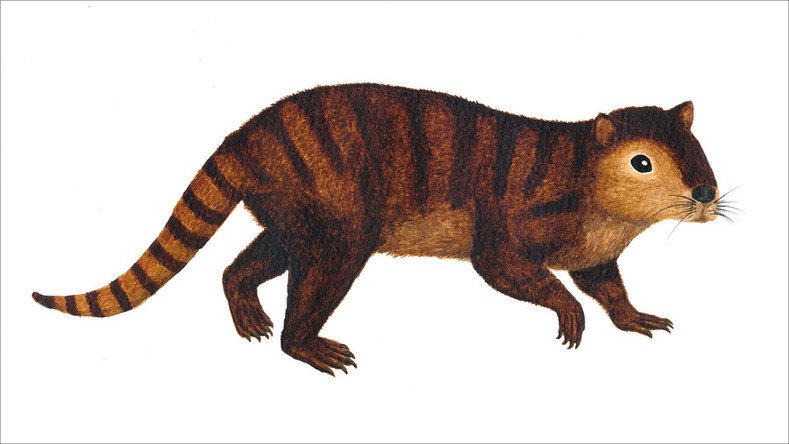Jurassic jaws: Toothy mammal thrived after meteorite wiped out dinosaurs

Scientists have discovered a new species of ancient mammal in New Mexico that survived the meteorite catastrophe that wiped out dinosaurs. The discovery may give valuable details on how mammals endured in the new unfriendly world.
The animal resembled a 1 meter-tall beaver weighing up to 40 kilograms, with distinctive sharp teeth growing in several rows. The multituberculate mammal has been named Kimbetopsalis simmonsae. The newly discovered fossil dates about 500,000 years after the global extinction caused by the meteorite.
The meteorite, some 10 kilometers in diameter, struck our planet estimated 66 million years ago and changed its climate completely, killing off 75 percent of species, most known of which were gigantic lizard predators and triggering a wave of natural disasters. The world and living conditions in it changed literally in a matter of one day.
READ MORE: Miniature T-Rex foot found on Welsh beach
Unlike T-Rex or Triceratops, the brave furry thing not only survived, but thrived and spread throughout Asia and North America. Thanks to the discovery, scientists have been able to update the mammal’s family tree further into the past.
The scientists, Dr Stephen Brusate and one of his students, Carissa Raymond, came across the fossil by accident while on an archeological dig in New Mexico.
“We realized pretty quickly that this was a totally new type of mammal that no one has seen before,” Brusate told BBC News.
‘Can we resurrect #dinosaurs?’ Discovery of blood, collagen in dinos' bones can give answer http://t.co/cMe2DLjTfbpic.twitter.com/NJmEp9e4ti
— RT (@RT_com) June 10, 2015The first part of the newly discovered mammal’s name comes from Kimbeto Wash, a site in New Mexico where it has been found while the second part – psalis – means “cutting shears” and is a tribute to its sharp teeth, Brusatte said.
“[During the Jurassic era] these animals were all pretty small,” he added.
The research, published in the Zoological Journal of the Linnean Society, suggests that the ancient rodent was unusually large, used to live in the woods and survived on greenery.
“It's larger than almost all of the mammals that lived with the dinosaurs, and also had a plant-eating diet, which few if any dinosaur-[era]-living mammals had. It shows just how quickly mammals were evolving in that brave new world after the asteroid cleared out the dinosaurs,” Brusatte told Reuters.
READ MORE: Fossils from 460 million year old human-sized sea scorpion unearthed in Iowa
“Mammals, which actually originated hundreds of millions of years earlier at the same time as the dinosaurs, now found themselves in an empty world, and they took advantage,” Brusatte said.
The group of scientists believe that the “Age of the Mammals” started when dinosaurs became extinct and this very group of beaver-like animals took over and started to proliferate.
"That's how the rise of mammals started and really the end result of that is us being here today," he said.
The Kimbetopsalis group is believed to have died out around 35 million years ago, when it was replaced by emerging rodents.












